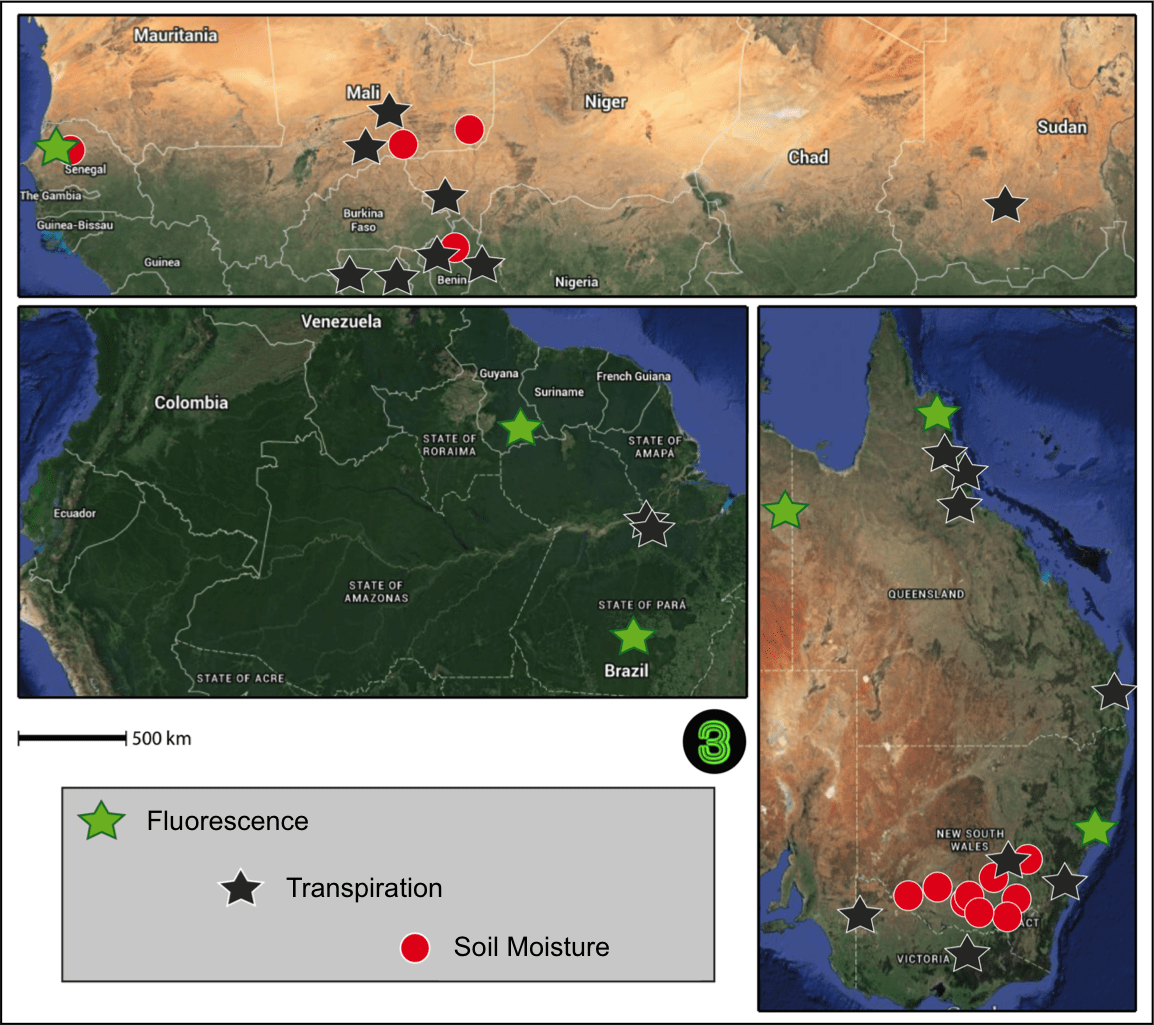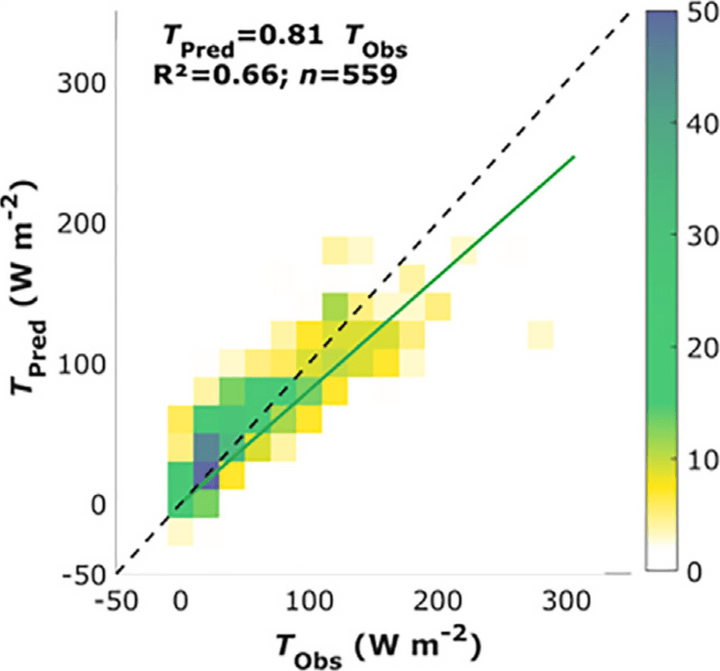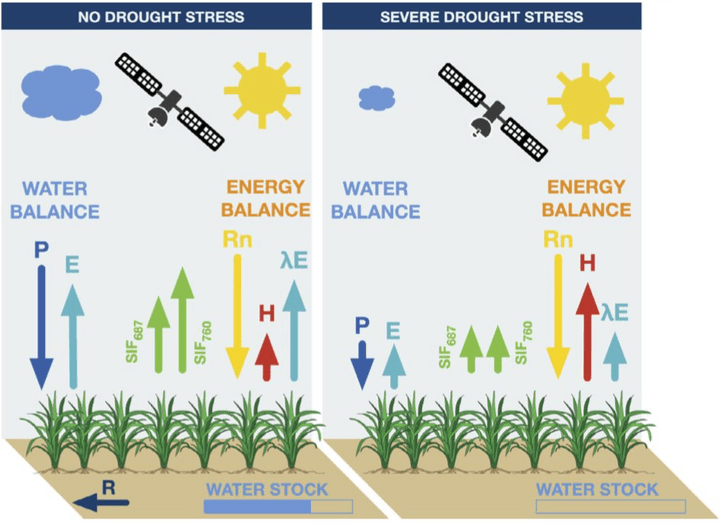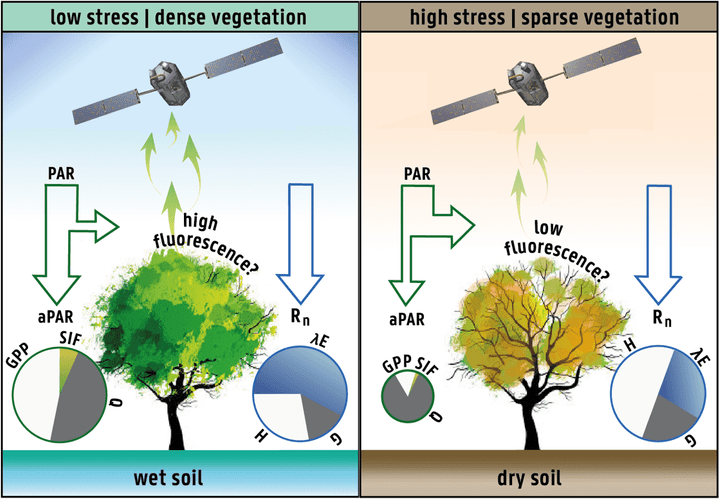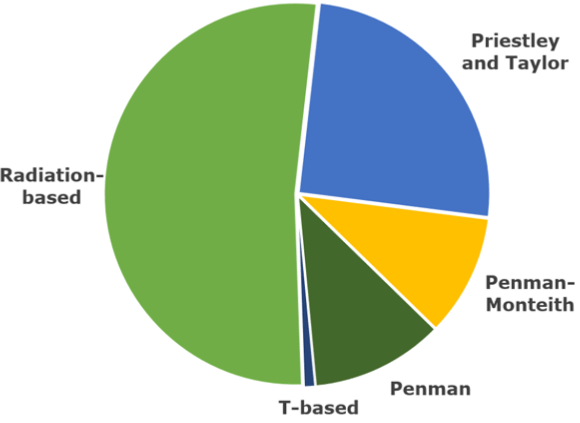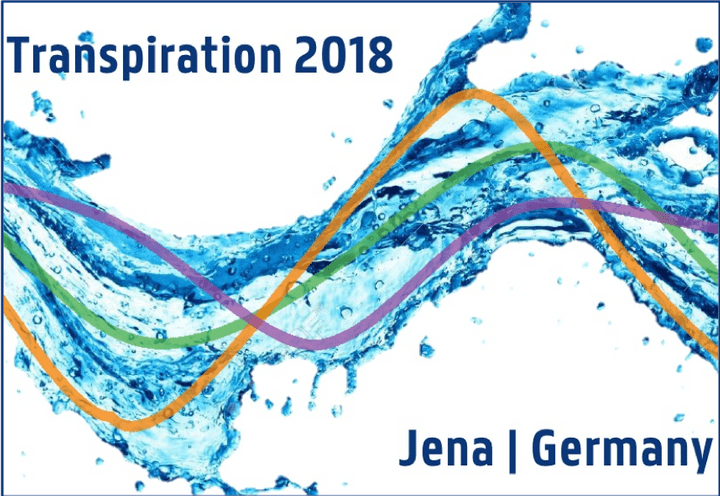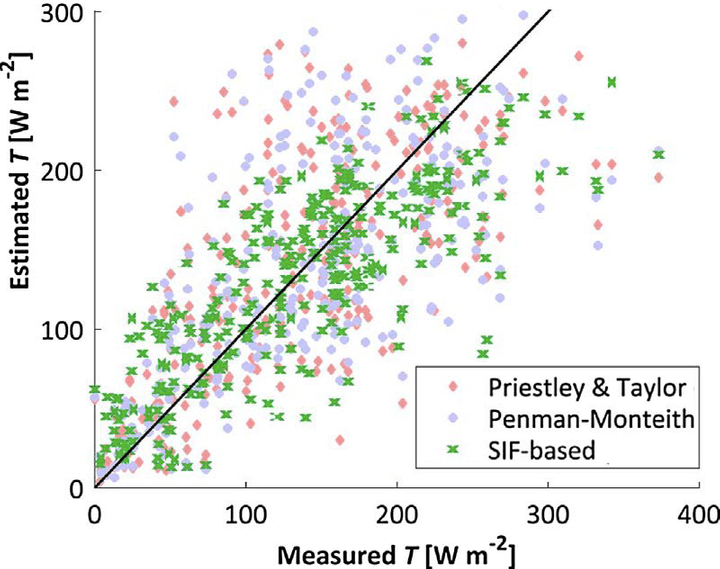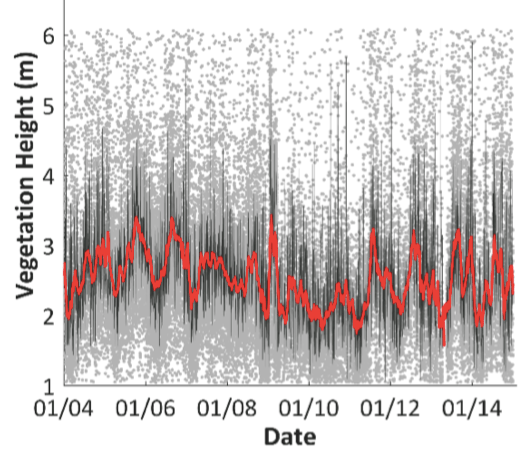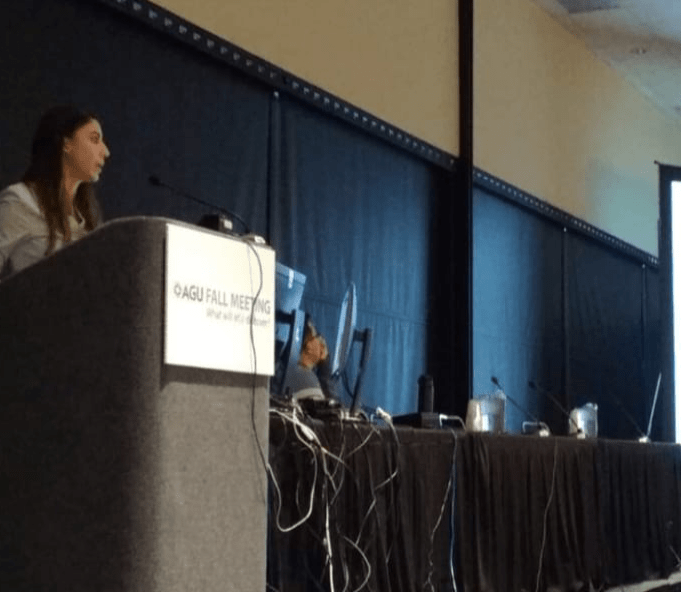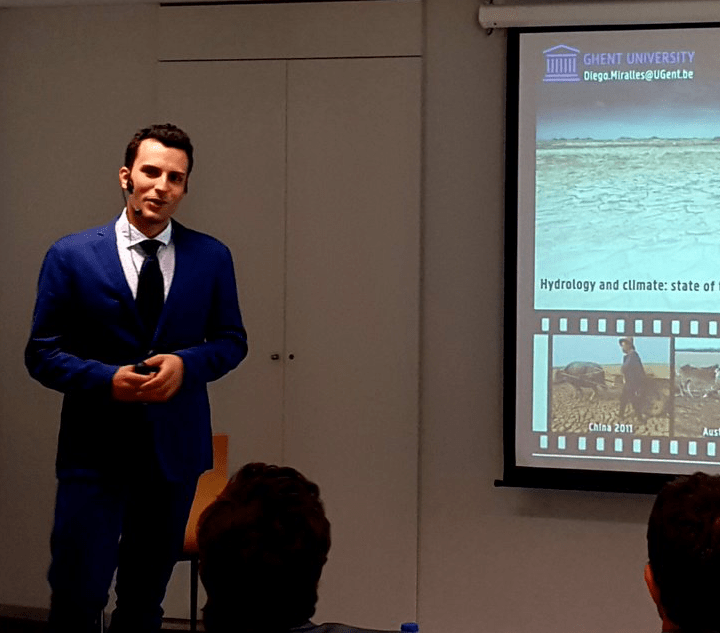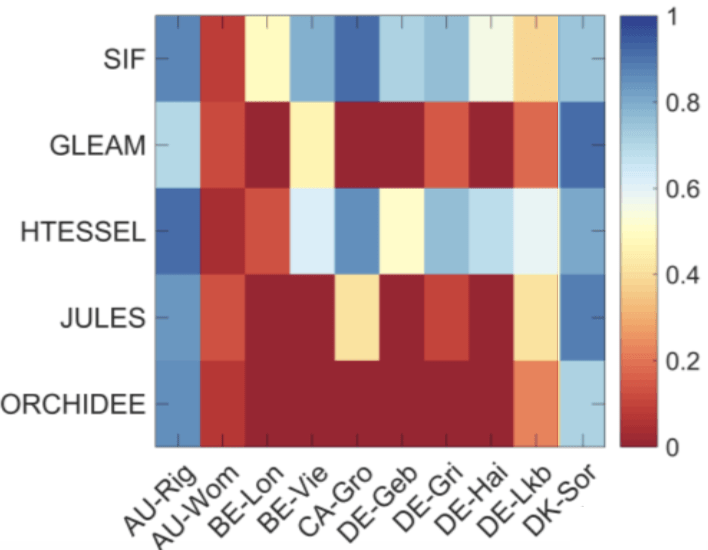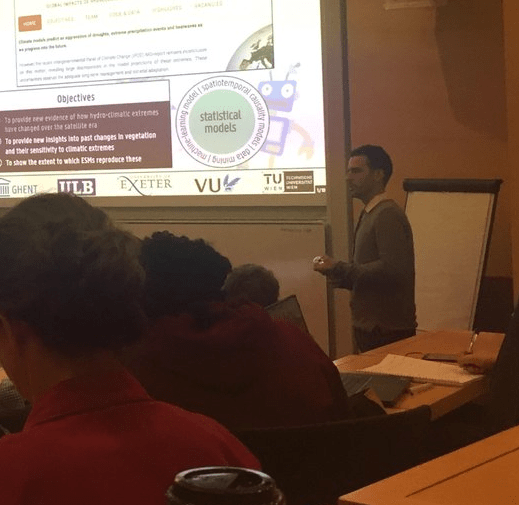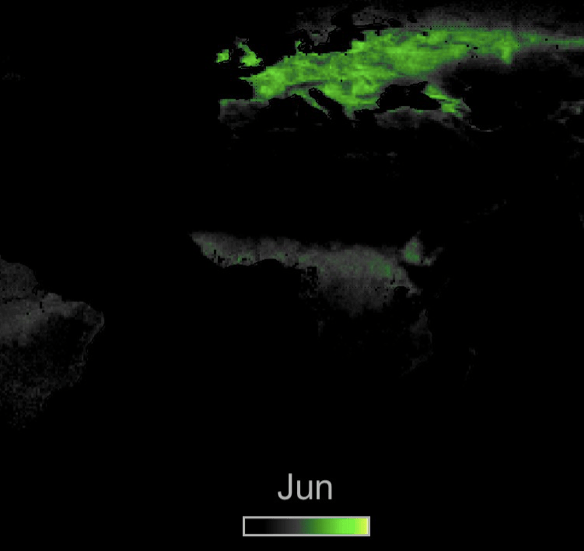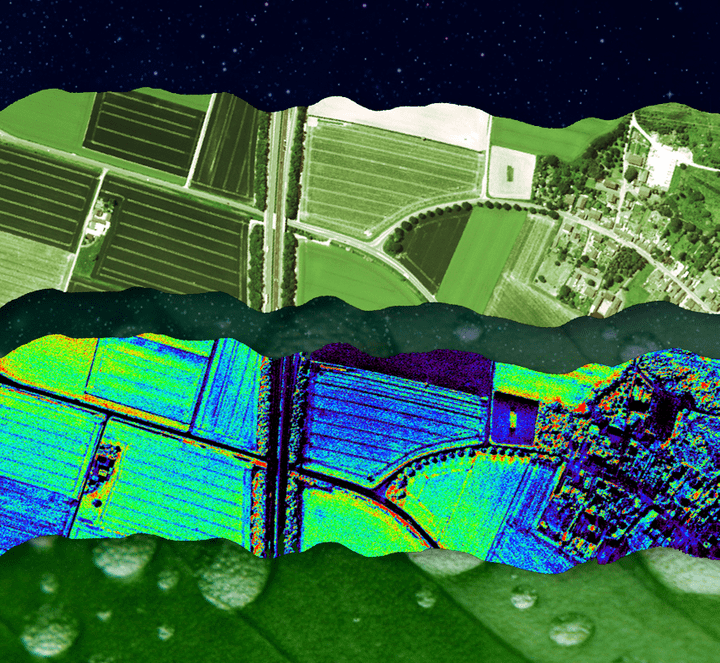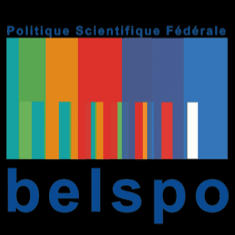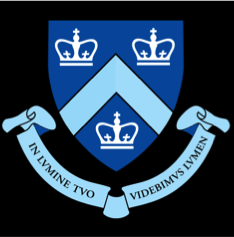
Stress on TRanspiration
Sensed from Satellite
Systems
A project looking at the potential of satellite observations of solar induced fluorescence for the understanding of global transpiration
Rationale
When plants are not subjected to stress, their photosynthetic reactions emit a subtle glow of fluorescence at wavelengths between red and near-infrared. This subtle glow is usually overlooked, as it is swamped by the plants' reflection of sunlight.
Observations of fluorescence by GOSAT were the first to focus on sun-induced chlorophyll fluorescence and use it for mapping photosynthesis at the global scale. Data from newer sensors like SCIAMACHY, GOME-2, OCO-2 or TROPOMI are recently becoming available.
The potential of fluorescence observations for understanding the carbon cycle is currently being explored widely. However, carbon exchanges between vegetation and atmosphere are mediated by the stomata cells, the same cavities responsible for the exchange of water.
Can fluorescence help understand water cycle dynamics?
With the recent approval of the dedicated FLuorescence EXplorer (FLEX) mission by the European Space Agency, understanding the value of fluorescence observations for hydrology appears fundamental. The objectives of STR3S strive in that direction.
Objectives

① To explore the satellite solar-induced fluorescence signal and its potential to capture the dynamics of vegetation stress.
② To conform a dataset of transpiration that incorporates fluorescence observations, and use it to gain insights into the variability of the global water cycle.
Team
Leading team in ecohydrology, plant physiology and remote sensing
Diego Miralles | UGent-LHWM
Diego obtained his PhD on global hydrology from the VU University Amsterdam (2011), and was then appointed as lecturer at the University of Bristol (2011–2014). In the present he is Professor in Hydrology and Climate at Ghent University. He is genuinely intrigued by soil–vegetation–atmosphere interactions and how the water cycle is impacted by changes in climate.
Niko Verhoest | UGent-LHWM
Niko received the engineering and Ph.D. degrees in applied biological sciences from Ghent University. In 1995, he was affiliated to Goddard Space Flight Center (GSFC) at NASA (Washington DC) and he has been working at the LHWM, that he currently heads, ever since. His research interests focus on the application of remote sensing in hydrological models and stochastic hydrology.
Wouter Maes | UGent-LHWM
Wouter obtained his MSc in forest ecology at Ghent University and his PhD at KU-Leuven. His research interests extend from sustainability of water use over forest ecology, to the application of remote sensing in terrestrial ecosystems, first mainly ground-based methods, but in the last few years predominantly from UAV’s and satellites.
Brianna Pagán | UGent-LHWM
Brianna obtained a MSc in Civil Engineering from Loyola Marymount University. She worked as a Water Conservation Planner in Southern California, and has held short-term research positions at the Oak Ridge National Laboratory’s Climate Change Science Institute. She currently investigates the ecological impacts of drought.
Pierre Gentine | NY–CU
Pierre is professor at Columbia University New York. He obtained his MSc and PhD from MIT. He has research interests in land-atmosphere interactions, hydrometeorology, convection, ecohydrology, remote sensing, data assimilation of remote sensing measurements to estimate soil moisture and surface heat fluxes, land-surface models, and stochastic processes.
Wouter Dorigo | TU–Wien
Wouter received the M.Sc. degree in physical geography from Utrecht University and his PhD degree in remote sensing from Munich. Since May 2017, Wouter leads the research group Climate and Environmental Remote Sensing at Vienna University of Technology. His main research interest is remote sensing of soil moisture and vegetation.
Kathy Steppe | UGent–PE
Kathy is the head of the Laboratory of Plant Ecology at Ghent University. Her research interests span from ecophysiology, to plant-water relations and carbon metabolism, xylem and phloem functioning, climate change effects on tree physiology and forest ecosystem processes, and monitoring plant stress.

Data
Satellite and in situ observations used during the project
STR3S uses in situ data collected at specific sites by project partners (see below), as well as data from the FLUXNET 2015 archive, and SIF satellite data from GOSAT, SCIAMACHY, OCO-2 and GOME-2.

Model
The Global Land Evaporation Amsterdam Model (GLEAM)

GLEAM is a set of algorithms that separately estimate the different components of land evaporation, including transpiration. Additionally, GLEAM provides surface and root-zone soil moisture, potential evaporation and evaporative stress conditions.
The rationale of the method is to maximize the recovery of information about evaporation contained in current satellite observations of climatic and environmental variables. Key features include the consideration of soil moisture constraints acting on evaporation, the detailed parameterization of tall-canopy interception loss and the extensive use of microwave observations, which is an asset under cloudy conditions.
Within STR3S, GLEAM will be used to translate the vegetation stress sensed by fluorescence retrievals into a flux of transpiration. The resulting estimates will be validated at multiple levels.
Highlights
News and results from STR3S

Project successfully ending | 20/08/2020
Thank you everyone involved!
The STR3S project has shed light on the link between satellite SIF retrievals and transpiration. The work of the team resulted in several articles exploring ecosystem-to-global scales, and including empirical and mechanistic approaches. We thank BELSPO for the support and hope to continue this line of work. For further questions: Diego.Miralles@ugent.be.

Transpiration–SIF link proved | 12/08/2020
Our project ends with clear evidence of SIF potential.
New evidence shows the value of SIF to estimate global transpiration. If combined with temperature, SIF retrievals can be used to monitor transpiration over large scales. Article just published.
Value of SIF for hydrology | 26/06/2020
A new review article highlights the potential SIF retrievals for hydrological studies
New article on SIF potential | 18/02/2019
SIF shows potential to constrain transpiration formulations in models
A new article in Remote Sensing, led by Brianna R. Pagán, indicates the empirical relation between SIF/PAR and transpiration efficiency, and compares satellite retrievals to in situ data and Land Surface Model estimates.

On potential evaporation | 18/02/2019
Radiation-based models appear superior at addressing ecosystem-scale potential evaporation
New article published in Hydrology and Earth System Science and led by Wouter H. Maes demonstrates a better performance of simple radiation-based formulations to estimate potential evaporation at FLUXNET sites.
Workshop MPI | 10/09/2018
Work presented at Max Plank Institute
We present recent progress on the use of satellite-based solar induced fluorescence to diagnose water fluxes from ecosystem to global scales at the Transpiration workshop in MPI Jena.

AGU award | 13/06/2018
STR3S researcher wins prestigious AGU award
Brianna Pagán is the new awardee of a Horton Research Grant, aiming to promote excellence in hydrology research. In her research she aims to utilise satellite sun-induced fluorescence observations to improve global transpiration retrievals.

Second Steering Meeting | 20/02/2018
The second steering committee meeting of STR3S takes place in Ghent
One year after the first one, the second steering committee meeting of STR3S takes place at Ghent University. Once again, world-renowned experts and BELSPO representatives will evaluate the project's progress.

New article published | 19/02/2018
Sun-induced fluorescence shows potential to estimate ecosystem transpiration
In this new article in Agricultural and Forest Meteorology – led by Xiaoliang Lu from the Ecosystems Center (MA, USA) – we show evidence of the potential of sun-induced fluorescence as a diagnostic of ecosystem transpiration.

Potential transpiration | 12/02/2018
Paper on the potential evaporation at eddy-covariance sites across the globe
The article led by Wouter Maes on potential transpiration based on eddy-covariance tower measurements is available at HESSD. This is a first step towards our validation of evaporative stress based on satellite SIF data.

Presentations at AGU | 15/12/2017
American Geophysical Union (AGU) Fall Meeting, New Orleans
Brianna Pagán successfully presented the results of the STR3S project at the AGU Fall Meeting 2017. The talk was entitled 'Integration of satellite-induced fluorescence and vegetation optical depth to improve the retrieval of land evaporation’.

Luxemburg seminar | 28/11/2017
LIST Water Lecture Series
Today, Diego Miralles gave an invited presentation at the Luxembourg Institute of Science and Technology. During his talk he presented the first results of STR3S, together with an overview of future challenges in hydrology and remote sensing.

CHyCle conference paper | 10/11/2017
Conference and proceedings
Brianna Pagán presented and published in the First International Electronic Conference on the Hydrological Cycle (CHyCle), her work 'Satellite observed solar induced fluorescence to monitor global plant stress’. Article available here.

Presentations at iLEAPS | 13/09/2017
Integrated Land Ecosystem-Atmosphere Processes Study (iLEAPS) Conference
Brianna Pagán and Diego Miralles presented the results from the STR3S project at the 5th iLEAPS Science Conference: 'Satellite observations of SIF to monitor global transpiration' and 'Sensitivity of global ecosystems to climate anomalies in observations and models’.

First Steering Meeting | 17/02/2017
The first steering committee meeting of STR3S takes place in Ghent
After the first few months of work, the first steering committee meeting of STR3S takes place at the Ghent Marriott on 17/02/2017. World-renowned experts and BELSPO representatives will evaluate the project's progress.

First results at ESA | 17/01/2017
The first results of our project are presented at the FLEX 2017 workshop
Dr. Wouter Maes presents the first results of the STR3S project in Frascati (Italy), during the ESA workshop 'Remote sensing of fluorescence, photosynthesis and vegetation status'. Information about the workshop and Wouter’s presentation: www.flex2017.org.

Project just started | 23/03/2016
Our project starts the first of April and will span for two years
A kick-off meeting will take place on April 11th. A symposium on ‘Remote sensing of vegetation and hydrology' has been organised for the occasion at Ghent University, with speakers from several institutions. For more information contact Diego Miralles at Diego.Miralles@ugent.be.
© 2018




